
|
Effect of Instructional Guidelines regarding Uterotonic Drugs Administration on Nurses’ Performance and Labor Outcome
|
|
|
Manar Gamal Mohamed1, Manal Hassan Ahmed2, Mostafa Zein El-Abdeen Mohamed3, Manal Abd Allah Gaheen4
|
|
|
Faculty of Nursing, Tanta University
|
|
|
manar.gamal21@yahoo.com
|
|
|
1531
|
|
|
Abstract
Background: The nurse has a very important role before, during and after uterotonic drugs administration through assessment, observation, proper interventions and notification of any abnormalities to the physician to render the highest quality of obstetrical care. The aim of this study was to: Evaluate the effect of the instructional guidelines regarding uterotonic drugs administration on nurses’ performance and labor outcome. Subjects and Methods: A quasi experimental research design was used. The study was conducted at three settings of labor units in Tanta city: Tanta University Hospital, El-Menshawy General Hospital and El-Mabara Hospital. The sample of this study consisted of all available nurses (40 nurses) as well as a purposive sample of 120 parturient women. Three tools were used for data collection; Tool I, Structured interview schedule, it included two parts. Part (1): Nurses socio-demographic characteristics. Part (2): Assessment of nurses′ knowledge regarding uterotonic drugs. Part (3): Socio-demographic characteristics of parturient women. Tool II: Observational checklist for nurses′ practice regarding uterotonic drugs administration. Tool III: Labor outcome assessment tool. Results: The implementation of the instructional guidelines resulted in a significant positive improvement of nurses’ performance regarding uterotonic drugs administration compared to pre instructional guidelines implementation consequently the maternal, fetal and neonatal outcomes were positively improved. Conclusion: it can be concluded from this study that the research hypothesis has been achieved after implementation of the instructional guidelines regarding uterotonic drugs administration which resulted in a statistically significant positive improvement of maternity nurses' performance and labor outcome immediately and three months later compared to pre guidelines implementation. Recommendations: Planning in-service training programs for all nurses must be conducted in order to improve, update and refresh their knowledge and qualify their practices dependent on recent evidence based guidelines regarding uterotonic drugs administration.
|
|

|
Effect of Educational Program on Nurses’ Performance Regarding Bleeding in Late Pregnancy
|
|
|
Doaa Samir Abou El-Yazeed El-Khawaga1, Mostafa Zain ElAbeden2, Fatma Ahmed Abou Romia 3, Manal Abdallah Gaheen4, Rabaa Elsayed Shaban5.
|
|
|
Faculty of Nursing, Tanta University
|
|
|
dode.samir23@yahoo.com
|
|
|
1532
|
|
|
Abstract: Bleeding in late pregnancy is the most common obstetric emergency. It is serious complication of pregnancy occurring within the third trimester and also a major cause of perinatal maternal morbidity and mortality which needs a highly skilled health care provider to save the life of the pregnant woman and her unborn fetus. The aim of this study: was to evaluate the effect of educational program on nurses’ performance regarding bleeding in late pregnancy. Subjects and method: The study was carried out at antenatal wards in obstetric and gynecological departments at Main Tanta University Hospital, El-Menshawy Hospital affiliated to the Ministry of Health and population and El-Mabara Hospital affiliated to the Health Insurance. All available nurses (48 nurses) who were working in the previously mentioned study settings and were provided care for 144 pregnant women with bleeding in late pregnancy. Two tools were used for data collection; Tool (I): Structured Interview Schedule. It comprised the following parts: Part 1: Socio-demographic characteristics of nurses and Part 2: Assessment of nurses’ Knowledge regarding bleeding in late pregnancy. Tool (II): Nurses’ practice regarding bleeding in late pregnancy by using an observation checklist. Results: The total knowledge level as well as the total practice level of the studied nurses regarding bleeding in late pregnancy was increased immediately and four months after implementation of the program with a significant statistical difference P value=0.0001 compared to pre-program. Conclusion: The findings of present study revealed that there was a significant improvement of knowledge as well as practice among the studied nurses regarding bleeding in late pregnancy post program compared to preprogram. Recommendation: Schedule in-services training program should be applied for nurses regarding management of bleeding in late pregnancy in order to improve nurses’ knowledge and practices which will be reflected on improving the quality of health care
|
|
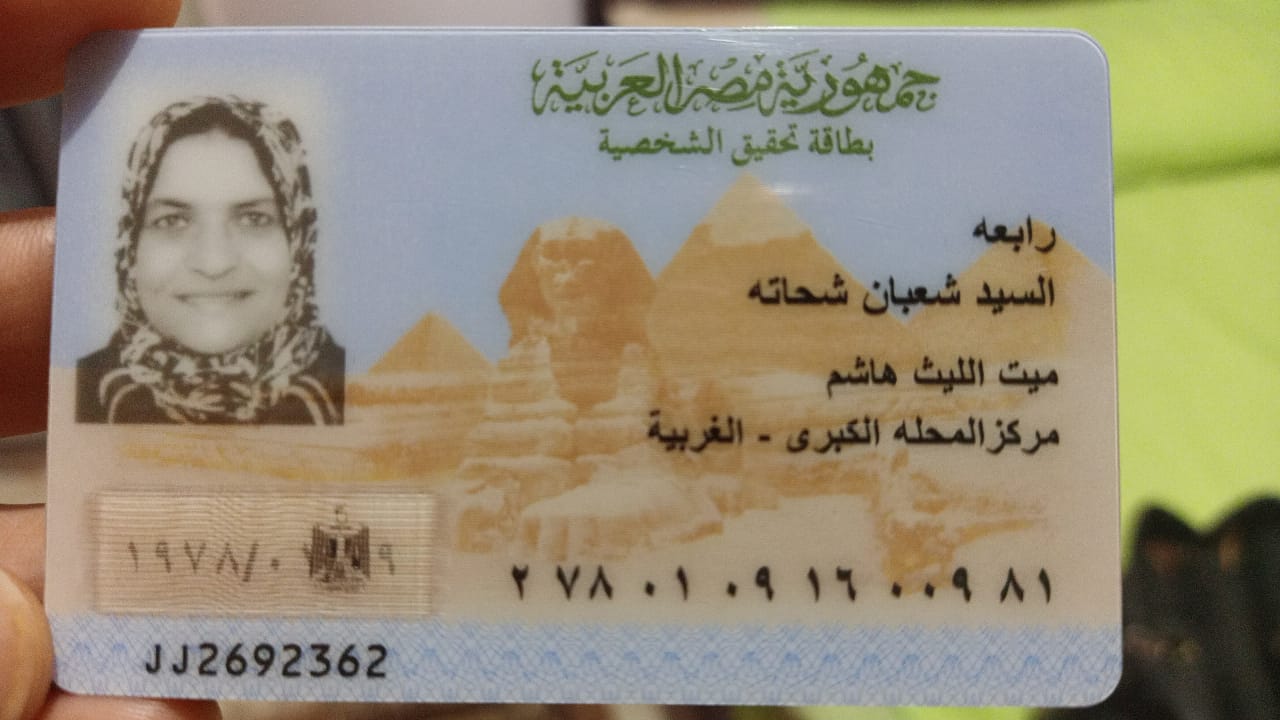
|
Effect of Nutritional Program on Anemic Status and Pregnancy outcome among Pregnant Women Suffering from Iron Deficiency Anemia
|
|
|
Rabaa El-Sayed Shaban
|
|
|
Faculty of Nursing, Tanta University
|
|
|
dr2010emanelkholy@yahoo.com
|
|
|
1533
|
|
|
Abstract: Iron deficiency anemia (IDA) is the most common nutritional disorder during pregnancy. The aim was to determine the effect of nutritional program on anemic status and pregnancy outcome among pregnant women suffering from iron deficiency anemia. Subjects and Method: The study was carried out at antenatal inpatient units and outpatient clinics at Tanta University and El-Menshawy Hospitals and four governmental antenatal clinics in Tanta city. Convenient sample of 60 pregnant women were included in the study and fulfilling the inclusive criteria. Five tools were used: Tool (I):A structured interview schedule included four parts: (a) Socio-demographic data, (b) Reproductive history, menstrual history, antenatal booking and attendance of antenatal care classes regarding IDA, (c) Current health history of women included: medical, surgical and also family history (d) History of iron deficiency anemia during current pregnancy. Tool (II): Women's knowledge assessment interview: it included two parts: a) Women's knowledge about iron deficiency anemia and b): Assessment of pregnant women's self-care measures and nutritional habits regarding iron deficiency anemia. Tool (III): Iron Intake Calculation Food Frequency Questionnaire it was used to assess women's iron dietary intake. Tool (IV): Bio-physiological measurement included: (a) Anthropometric measurements :Body Mass Index and Mid Upper Arm Circumference (MUAC), (b) Physical examination: to assess signs of iron deficiency anemia, (c) Measurement of serum hemoglobin level on capillary blood using one touch hemoglobin device(d) Stool analysis: was done to exclude parasitic infestation. Tool (V): Outcome assessment tool: Results: Itrevealed that mean blood hemoglobin level had increased from (9.05±0.98) pre-program to (11.8±0.95) at the end of the 2nd trimester and (10.74±0.93) at the end of the 3rd trimester. Conclusion: Significant improvement of the level of knowledge, dietary habits, anemic status (hemoglobin level) and the maternal & neonatal outcome were found after implementation of the program.
|
|

|
Effect of High Fidelity Simulation on Intern Students' Competency regarding Clinical Guidelines for Active Management of the Third Stage of Labor
|
|
|
Eman Ahmed El-Kholy
|
|
|
Faculty of Nursing, Tanta University
|
|
|
dr2010emanelkholy@yahoo.com
|
|
|
1534
|
|
|
Abstract: The third stage of labor is a critical period, thus using high fidelity simulation to enhance intern students' competency through implementing the clinical guidelines for active management of the third stage of labor is essential for preventing its serious complications mainly postpartum hemorrhage. The aim: Was to determine the effect of high fidelity simulation on intern students’ competency regarding clinical guidelines for active management of the third stage of labor. Subjects and Method: The study was carried out at Objective Structure Clinical Examination (OSCE) skills laboratory at Faculty of Nursing, Tanta University. A convenient sample consists of 50 intern nursing students who were trained at labor unit, obstetric department, Tanta university hospital and fulfilling the inclusive criteria. Three tools were used to collect the data: Tool (I): A structured interview schedule included three parts: Part (a) Socio demographic characteristics of the intern nursing students, part (b) Intern students’ knowledge regarding the third stage of labor, and part (c) Intern students’ knowledge regarding clinical guidelines for active management of the third stage of labor. Tool (II): Intern students’ practice observational checklist contained seven sequential steps of clinical guidelines for active management of the third stage of labor. Tool (III): Modified Self-Confidence Measurement Scale included 7 items that measured how confident intern nursing students felt about the skills they performed during simulation training program. Conclusion: Based on the findings of the present study, it can be concluded that high fidelity simulation training significantly improved the intern students’ knowledge, practice as well as the self-confidence regarding clinical guidelines for active management of the third stage of labor. Therefore, the study recommended that providing pre-service and in-service training programs using high fidelity simulation especially for newly appointed intern nurses is crucial to improve their knowledge and practices as well as the self-confidence.
|
|

|
Sustainability of Nursing
|
|
|
Assistant professor/Lobna Khamis Mohamed
|
|
|
Faculty of Nursing, Tanta University
|
|
|
lobna.ibrahim@nursing.tanta.edu.eg
|
|
|
1542
|
|
|
Sustainable development (SD) has become a popular catchphrase in contemporary times as international agencies, the jargon of development planners, the theme of conferences and academic papers, as well as the slogan of development and environmental activists. In spite of its pervasiveness and massive popularity, the concept still seems unclear in its meaning and history, as well as what it implies for nursing science. Nursing is not an isolated profession excluded from rest of the world or health care systems; it includes environmental as well as global issues in planning nursing responsibilities to the society. Nurses are key professionals in the health care system, and should be aware of their responsibilities for the public to reduce effects of climate change. Sustainability is the road for magnet & green hospitals. It is fundamental that nursing academics and hospital leaders achieve literacy of sustainability in different specialties of nursing science. It is fundamental that nursing academics and hospital leaders achieve literacy of sustainability in different specialties of nursing science.
|
|
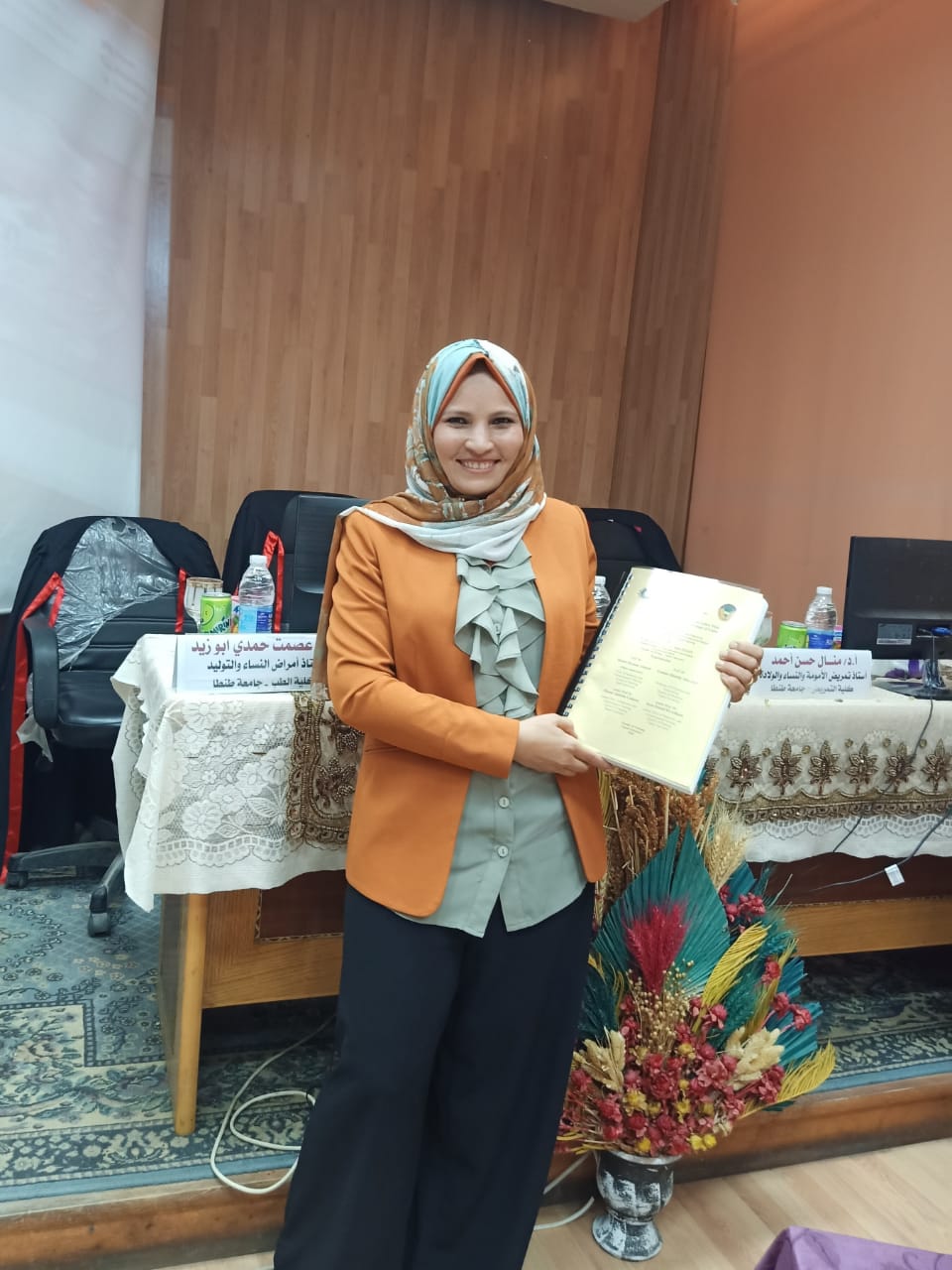
|
Effect of Utilizing Perineal Massage, Warm Compresses and Hands on Techniques during the Second Stage of Labor on Perineal Outcomes
|
|
|
Dr/ Toha Ali El -Sayed Abo-Hatab
|
|
|
Faculty of Nursing, Tanta University
|
|
|
tohaali2016@yahoo.com
|
|
|
1543
|
|
|
Abstract: Maternal morbidity is one of the most common consequences of perineal tear associated with vaginal birth. Thus, prevention of perineal tear becomes an urgent need. The aim of this study: was to evaluate the effect of utilizing perineal massage, warm compresses and hands on techniques during the second stage of labor on perineal outcomes. Subjects and Method: A convenient sample of (120 parturient women) were selected from labor units in obstetric departments at Tanta university and El-Menshawy hospitals and were divided into four groups (three study groups and one control group). Four tools were used for data collection; Tool I, Structured interview schedule; it included two parts. Part 1: Sociodemographic characteristics. Part 2: Reproductive history. Tool II: Visual Analogue Scale (VAS). Tool III: A Modified Behavioral Pain Scale (MBPS). Tool IV: Assessment of second stage and perineal outcomes. Results: The results of the present study revealed that perineal pain intensity and associated behavioral responses as well as perineal tear had significantly reduced among women to whom lubricated massage, warm compresses and hands on techniques were applied compared to the control group. Conclusion and recommendations: it can be concluded that the use of perineal supportive techniques were effective in improving perineal outcomes which was highly significant among lubricated perineal massage group. So, in-service training programs should be implemented for maternity nurses regarding the applications and benefits of perineal lubricated massage, warm compresses and hands on techniques during the second stage of labor to improve perineal outcomes. Keyword: Warm compresses, perineal massage, hands on technique, perineal outcomes.
|
|

|
Effect of Implementation of Teaching Program on Pregnancy Outcome among Primipara Women Suffering from Pregnancy Induced Hypertension.
|
|
|
Faiza Mohamed Elsaid
|
|
|
Faculty of Nursing, Tanta University
|
|
|
faiza.mohamed10@yahoo.com
|
|
|
1577
|
|
|
Background: Pregnancy Induced Hypertension (PIH) is strongly associated with adverse outcomes to the mother, fetuses, as well as newborn. Health education intervention regarding risks and proper self-care measures will contribute to complications reduction and improve pregnancy outcome. The aim of this study: was to evaluate the effect of teaching program on pregnancy outcome among primipara women suffering from pregnancy induced hypertension. Subjects and Method: The study was conducted at antenatal unit in obstetric departments of Tanta University Hospital, El-Menshawy Hospital and 4 MCH Centers in Tanta. Convenient samples of 60 pregnant women diagnosed with pregnancy induced hypertension were selected from the previously mentioned settingsaccording to the inclusive criteria. Three tools were used for data collection: Tool (I): A structure interview schedule that included three parts: (a) socio demographic characteristics, (b) Reproductive history, (c) History of present pregnancy. Tool (II): Structured women’s Knowledge Interview Schedule that included three parts:Part a: women’s knowledge regarding pregnancy induced hypertension, part b:women’s knowledge regarding self-care management and part c:reportedwomen’s self-care measures. Tool (III): Outcome Assessment Tool that included two parts: part I: Maternal outcome assessment sheet, part II: Neonatal outcome assessment sheet. Results: The resultsof the present study revealed improved women’s level of knowledge as well as positive maternal and neonatal outcomes after implementation of health teachingprogram. Conclusion and Recommendation:The health education program had improved women’s level of knowledge which consequently reflected positive effect on the maternal and neonatal outcomes. So, it is important toplan and develop antenatal health educational classes for all pregnant women. In addition, Provision of continuous refreshing courses, pre-service and in-service training programs should be provided for newly appointed nurses regarding PIH management at all levels of health care.
|
|

|
Knowledge, self-reported practices, and believes of rural women about household solid waste management at El Gharbia governorate
|
|
|
Assist.Prof.Dr/Lulah Abdelwahab Abdelaty Hassan
|
|
|
Faculty of Nursing, Tanta University
|
|
|
drlulah@nursing.tanta.edu.eg
|
|
|
1580
|
|
|
Household solid wastes disposal and management represents a major public health and environmental issue. Improper waste management harms not only human, but also the environment, plants and animals. Women play an important role in the process of household solid waste management. The aim of the study was: - to assess knowledge, self-reported practices, and believes of rural women about household solid waste management at El Gharbia governorate Subjects and Method: - A descriptive analytic cross-sectional study design was used in this study. Study subjects: - A convenience number of 1000 rural women were included in the study through home to home visit Tools of data collection: - A structured interview schedule was developed by the researchers. It consisted of four parts: - Part 1: Socio-economic status of rural women. Part (II): knowledge of rural women about household solid waste disposal. Part (III): reported practices of rural women about household solid waste disposal and management. Part (IV): Beliefs of rural women about solid waste disposal and management. Results: - the results of the present study revealed that, 62% of the studied women had fair and poor knowledge about solid waste management, and only 38% of them had good knowledge. About two-thirds (63%) of them reported un-satisfactory practice, and 82% of them had positive believes about solid wastes management. There were significant positive correlation between women's Knowledge, reported practice, and socio- demographic characteristics. Conclusion and recommendations: - Although the majority of the studied rural women had positive believes about solid wastes management, about two thirds of them had fair and poor knowledge and un-satisfactory practice. Therefore, rural women need more attention from local and higher authorities to enhance their knowledge about solid wastes and in turn improve their practices toward household waste management.
|
|

|
Effect of Educational Program on Gynecological Nurses′ Performance Pre and Post Hysterectomy Surgery
|
|
|
Azza Fouad El-Adham
|
|
|
Faculty of Nursing, Tanta University
|
|
|
eladham65@hotmail.com
|
|
|
1581
|
|
|
Background: Hysterectomy is the most common gynecological surgical procedure among reproductive age women. The nursing care plan for a woman undergoing hysterectomy should reflect nurse's awareness of the physical care required, as well as her emotional needs and anxiety levels. The aim of this study: was to determine the effect of educational program on gynecological nurses′ performance pre and post hysterectomy surgery. Subjects and method: The study was conducted at the gynaecological inpatient unit of obstetric and gynaecological department at Tanta University Hospital and El-Menshawy Hospital affiliated to Ministry of Health and Population. All nurses (40 nurses) who were working in the previously mentioned settings and provided care to women undergoing hysterectomy were included in the study. Two tools were used for data collection; Tool (I): Structured interview schedule for nurses. Tool (II): An observational checklist for nurse′s performance. Results: The results revealed that majority of the studied nurses had low level of knowledge and unsatisfactory performance regarding hysterectomy preprogram, which significantly improved immediately and one month post program with a significant statistical difference P <0.05. Conclusion and recommendations: The findings of present study revealed that the implementation of the educational program resulted in a significant improvement of nurses’ performance regarding pre and post hysterectomy surgery immediately and one month after program compared to preprogram. Planned in-service training programs for all nurses regarding hysterectomy surgery must be conducted regularly in order to improve, update and refresh their knowledge and performance based on recent evidence based practices in gynecological area.
|
|

|
Effect of High Fidelity Simulation Based Training Program on Nursing Students’ Performance, Self-efficacy and Confidence regarding Prevention of Postpartum Hemorrhage
|
|
|
Assist. Prof. Dr/ Azza Fouad El-Adham
|
|
|
Faculty of Nursing, Tanta University
|
|
|
eladham65@hotmail.com
|
|
|
1582
|
|
|
Background: Postpartum Hemorrhage is an obstetric complication that leads to maternal morbidity and mortality. The aim of this study: was to determine the effect of high fidelity simulation-based training program on nursing students’ performance, self-efficacy and confidence regarding prevention of PPH. Experimental study design was used in this study. Subjects and method: the study was conducted at two settings; (1) Clinical obstetric laboratory skills for academic third year at Faculty of Nursing, Tanta University and (2) Labor unit in obstetric department at Tanta University Hospital. A cluster random sample of 60 nursing students in the third academic year who fulfilled the inclusive criteria were included in the study and were divided into two groups; each of them consisted of 30 students. Four tools were used for data collection; Tool (I): A structured interview schedule, comprised of two main parts as follows; Part I: Socio demographic characteristics of nursing students. Part II: Students’ knowledge regarding PPH. Tool (II): Students' clinical performance observational checklist contained two parts as following; Part I: Prevention of atonic PPH during the third stage of labor and Part II: Prevention and management of atonic PPH during fourth stage of labor. Tool (III): Self-efficacy Scale, and Tool (IV): Modified self-confidence measurement scale. Results: Students' knowledge, clinical performance, self-confidence, as well as self-efficacy regarding prevention and management of PPH were high after the use of the high fidelity simulation-based training program. Conclusion and recommendations: The use of high-fidelity simulation in teaching improved the three domains of learning; knowledge, skills, and attitude of the nursing students for the prevention and rapid effective nursing response for managing PPH.
|
|
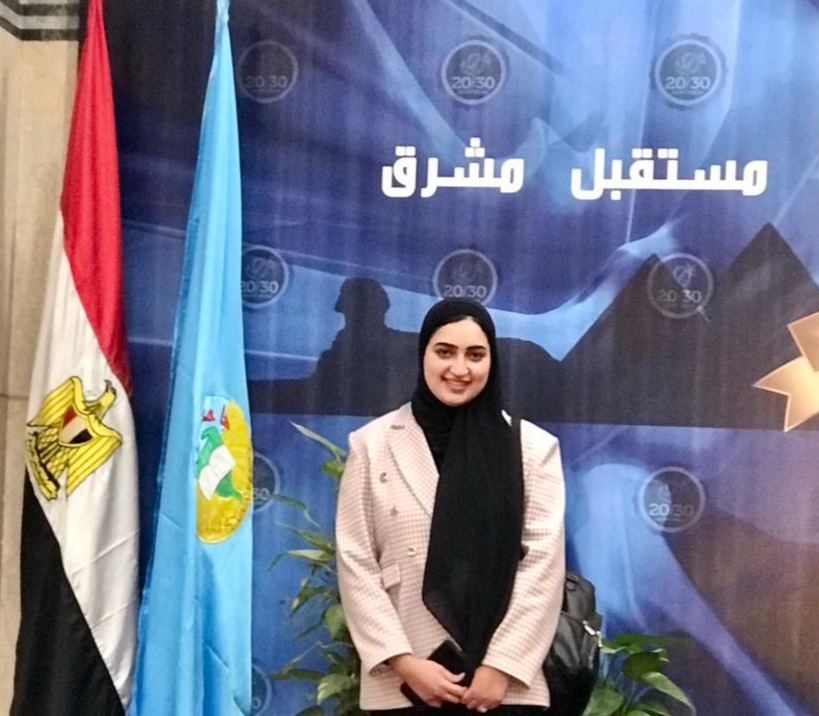
|
Pesticide Detection in Vegetable Crops Using Enzyme Inhibition Methods: a Comprehensive Review
|
|
|
(1)Heba Bedair,(1) Hadeer Abdulrahman Rady, (2)Aya Misbah Hussien, (3)Meena Pandey,(4) Wilgince Apollon,(5) Samar Sami AlKafaas (6)Soumya Ghosh
|
|
|
(1)Botany Department, Faculty of Science, Tanta University, Tanta, Egypt (2) Biotechnology Department at Institute of Graduate Studies and Research, Alexandria University, Alexandria, Egypt (3) Paklihawa Campus, Institute of Agriculture and Animal Science, Tribhuvan University, Lumbini, Bhairahawa, Rupandehi, Nepal (4)Department of Agricultural and Food Engineering, Faculty of Agronomy, Universidad Autónoma de Nuevo León, Francisco Villa S/N, Ex-Hacienda El Canadá, General Escobedo, Nuevo León, 66050, México (5)Chemistry Department, Division of Biochemistry, Faculty of Science, Tanta University, Tanta, Egypt (6)Department of Genetics, Faculty of Natural and Agricultural Science, University of the Free State, Bloemfontein, 9301, South Africa
|
|
|
hadieer31012963@science.tanta.edu.eg
|
|
|
1596
|
|
|
Abstract
One serious environmental problem in the world is food contamination. Many of the environmental pollutants result from agricultural activities. Particularly pesticides, which are commonly used to protect seeds and crops, have serious negative implications for human health. Therefore, biosensors were developed and used to detect pesticides in food and environmental samples in the last few decades. Indeed, utilization of enzyme inhibition method in pesticide detection has received the greatest interest. Therefore, this study screens previous researches on enzyme inhibition biosensors for determining pesticides and
highlights different biological sources of these enzymes. The review acts as a guide for the detection of organophosphorus and carbamate pesticides in vegetable crops.
Introduction
Agriculture is the backbone of the economy of agrarian
country. Ensuring food safety is an arduous task with declining cultivation land resources and increasing productivity of crops. This necessitates the adoption of high-yielding varieties, balanced fertilization and often the indiscriminate use of pesticides. Pesticides are largely used in vegetables such as brinjal, ladies’ fnger, tomato, cabbage, caulifower, cluster bean, chilli, and green leafy vegetables, since they are highly susceptible to pests and disease (Pandey et al. 2017).To control in-borne pests and obtain a high market value, pesticides are sometimes administered to the vegetables even after they have been harvested (Bhavadharani et al. 2019).Organophosphorus (OP) pesticides are commonly used for pest control, because of their expeditious breakdown and low persistence in the environment. However, OP pesticides cause many adverse health efects like headache, fatigue, breathing problems, abdominal cramps, tingling in extremities, and depression of cholinesterase activity (Nguyen et al.
2019).
|
|

|
Nursing Management of Workplace Violence Against Emergency Nurses
|
|
|
Assis. Prof. Heba Kamal Obied
|
|
|
Faculty of Nursing, Tanta University
|
|
|
heba.obied@nursing.tanta.edu.eg
|
|
|
1607
|
|
|
Workplace violence is any behavior that results in injury whether real or perceived by an individual at their workplace, including but not limited to verbal abuse, threats of physical harm, physical harm, and sexual harassment. WPV incidents have rarely been reported because of the poor public image it would create for the healthcare facility. Nurses and nursing students are three times more likely to experience violence than any other professional group. Emergency Hospital is vulnerable place for workplace violence due to the nature of ED nurses’ work, the length of waiting time to be seen by a physician, and the nature of patients and their relatives. . Head nurses are responsible for improving work conditions to increase nurses’ job satisfaction and decrease work stressors to improve the quality of nursing-care. They are responsible for training nurses on WPV warning signs, protective measures, reporting violence incidence and providing physical and psychological treatment for WPV nurse victims. Aim: the study aimed to: assess the emergency nurses’ perception of violence aspects and its relation to their performance. And assess the head nurses’ reaction activities in preventing and managing violence against nurses at emergency hospital. Methods: Setting: The study was conducted at Tanta University Emergency Hospital (TUEH). Subjects: All (50) available nursing intern students trained at TUEH. All (150) available nurses were caring for patients in TUEH. And all (50) available head nurses were working in TUEH. Tools: three tools were used Tool I: Nurses' perception about factors contributing to WPV. Tool II: Nurses' perception of WPV types, Perpetrators and rate of experiencing each type and nurses’ perception of the effects of WPV on their performance as well as head nurses’ reaction toward WPV were identified. Tool III: Head nurses' perception on their activities for preventing and managing WPV against nurses.
|
|

|
Comparative study on growth, survival and pigmentation of Solea aegyptiaca larvae by using four different microalgal species with emphasize on water quality and nutritional value
|
|
|
Gihan M. El-Khodary 2, Heba S. El-Sayed 3, Hanan M. Khairy 4, Mohamed A. El-Sheikh5 ,Xianghui Qi 1* & Mostafa E. Elshobary 1, 6*
|
|
|
1 School of Food & Biological Engineering, Jiangsu University, Zhenjiang 212013, Jiangsu, China 2 Zoology Departments, Faculty of Science, Damanhur University, Egypt. 3 National Institute of Oceanography and Fisheries, Fish Reproduction Laboratory, Aquaculture Division, Egypt. 4 National Institute of Oceanography and Fisheries, Hydrobiology Laboratory, Marine Environmental Division. Egypt 5 Botany & Microbiology Department, College of Science, King Saud University, Saudi Arabia 6 Department of Botany, Faculty of Science, Tanta University, Egypt
|
|
|
gihankhodary@hotmail.com
|
|
|
1618
|
|
|
This study aimed to evaluate appropriate water sources to improve Solea aegyptiaca aquaculture from larval to the juvenile stage using two water sources (Eastern Harbour (EH) and Max Well (MW)). Firstly, four microalgae's nutritional value (Nannochloropsis salina, N. oculata, Chlorella salina, and Tetraselmis chuii) was assessed in both water sources. MW of high nitrate content enhanced the algal biomass and biochemical composition of all species compared to EH. MW-N. salina showed the highest growth and biochemical contents among the investigated species and yielded Artemia franciscana with a considerable amount of arachidonic acid (ARA), eicosapentaenoic acid (EPA) and docosahexaenoic acid (DHA) compared to EH. Secondly, Artemia enriched MW-N salina was used to improve S. aegyptiaca quality in both water sources from 10-48 days post-hatch at a density of 15 larvae L-1. The MW-S. aegyptiaca exhibited a significant increase in morphometric parameters, albino percentages and recorded the highest ARA, EPA, and DHA content (35.9, 6.1, 15.9 µg g-1, respectively) compared to that reared on EH. The study reports evidence of albinism of MW-S. aegyptiaca due to high dietary and ARA content. Overall, the seawater source has a significant impact on the whole food chain quality from microalgae to S. aegyptiaca.
|
|

|
Efficacy of START Triage Algorithm Scenario-Based Education on Nursing Students' Knowledge, Competencies, and Clinical Judgment
|
|
|
Dr/Zienab Adel Allam
|
|
|
Faculty of Nursing, Tanta University
|
|
|
zainab.alam@nursing.tanta.edu.eg
|
|
|
1623
|
|
|
Abstract: Triage nurse immediate sorting capabilities, her knowledge, performance, and accurate decision-making are the most important factor affecting immediate lifesaving, clinical outcomes. The aim to determine the efficacy of START Triage algorithm scenario-based education for adults on faculty nursing students' knowledge, competencies, and clinical judgment .Materials and Methods a quasi-experimental research design was utilized in this study. This study was conducted at the Faculty of Nursing at Tanta University. A convenience sample of 400 students were included in this study the educational intervention carried out on two phases phase I: pre-intervention phase (initial assessment) and phase II interventional phase in which the students were randomly divided into two studied groups as follows group I ( lecture and role play) and group II ( self-directing group)two tools were used for data collection Tool (1): A structured knowledge students' questionnaire tool.Tool (2) Students 'performance checklist tool .The main results of this study revealed that there were a highly statistically significant differences between studied students' knowledge, performance and accurate clinical decision making among the phases of the study .Also, the results revealed a positive correlation relationship between knowledge, performance, and accurate clinical judgment. As r=0.524,0.612, 0.540 respectively p= (0.000).Conclusion: scenario-based education by lecture combined with role-playing and self-directing educational method for START Triage algorithm and disaster management has a positive impact on improving nursing students' knowledge, competencies, that has also affected effectively on their accurate clinical decision making regarding different emergencies and multi-causality situations. It was recommended that essential provision and establishment, of triage algorithms and emergency management strategies in faculty of nursing curriculums and nursing faculties, must provide continuous education and training in actual clinical areas and expose the students to deal with different emergencies and working in stressful situations to enhance their capabilities and progress their psychomotor and cognitive skills
|
|
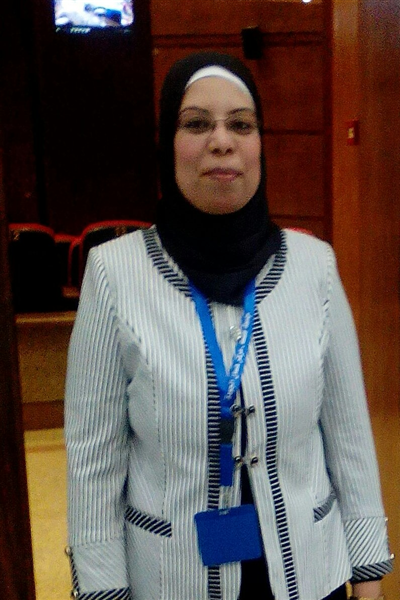
|
The Effect of Educational Program on Knowledge and Commitment of Male Employees at Tanta University Regarding Prostate Cancer Screening
|
|
|
Samira El Sayed El mezayen
|
|
|
Faculty of Nursing, Tanta University
|
|
|
samira.elmazeen@nursing.tanta.edu.eg
|
|
|
1635
|
|
|
Prostate cancer is increasingly becoming one of the most significant health problems facing men and the commonest cause of cancer-related death in men globally. Thus, screening has immense public health importance. The aim of the study: was to evaluate the effect of educational program on knowledge and commitment of male employees at Tanta University regarding prostate cancer screening. Study design: A quasi-experimental research design was utilized. Study settings: This study was conducted at the faculties of the medical campus (Faculty of Nursing, Medicine, Pharmacy, Dentistry, and Faculty of Science) at Tanta University. Study subjects: Systematic random sample of 80 male employees, aged 40 to 60 years old who were free from prostate cancer, and willing to participate in the study were included. Study tools: Two tools were used for data collection: Tool (I) A structured interview schedule which consisted of two parts: Part I: bio socio-demographic characteristics of studied employees. Part II: Knowledge about prostate cancer and prostate cancer screening. Tool (II) Commitment to prostate cancer screening. Results: The majority of studied employees had a low level of knowledge pre-program. Immediately after the program intervention most of them had a high level of knowledge. Meanwhile, two-thirds of them had a high level of knowledge one month after the program intervention. More than two-thirds of the studied employees had a low level of commitment to prostate cancer screening tests pre and immediately post-intervention. While less than two-thirds of them retain a high level of commitment one month after the program intervention. Conclusion: There was a significant improvement in the total level of knowledge and commitment to prostate cancer screening. Recommendation: An ongoing effort should be undertaken to raise awareness of the significance of prostate cancer and to eliminate screening barriers.
|
|

|
Evaluation of bacteriophage to reduce Escherichia coli contamination in different food samples
|
|
|
Nourhan Fawzy, Ayman El-Shibiny, Hesham M. Shafik
|
|
|
Nourhan Fawzy1,*, Ayman El-Shibiny2,3 , Hesham M. Shafik1 1 Department of Botany, Faculty of Science, Port-Said University, Port Said, Egypt. 2 Center for Microbiology and Phage Therapy, Biomedical Sciences, Zewail City of Science and Technology, Giza, Egypt. 3 Faculty of Environmental Agricultural Sciences, Arish University, Arish, Egypt *Corresponding author: noallam@zewailcity.edu.eg
|
|
|
noallam@zewailcity.edu.eg
|
|
|
1656
|
|
|
Food security is critical in the foodstuffs industry since most bacterial pathogens may cause foodborne illnesses and harm general health. In food, E. coli infection was recognized as the major cause of many cases of foodborne diseases. Moreover, the hazards have increased remarkably as most bacteria have acquired resistance to many antibiotics. Bacteriophages (phages) are a natural alternative agent that can be used for food preservation; they are viruses that can target bacteria specifically without causing harm to the human, plant, or animal cells. This research aimed to evaluate the efficacy of phage isolates in suppressing E. coli strains isolated from food samples. The phage was collected from sewage water and tested against E. coli isolate (EC/20) in vitro. Phage ZCECO 5 genome size was assessed to be ~339.5 kbp, and electron microscopy examination revealed that it related to the Myohoviridae family. In addition, it was found to be tolerant to a wide range of temperatures and pH. At different Multiplicity of Infections (MOIs), it showed a decrease in bacterial counts, with more bacterial elimination at stronger MOIs. Additionally, at MOI 10, the phage inhibited E. coli optical density from 1.0 OD600 to 0.7 OD600 after 230 min, and following a four-hour incubation period at 37°C, the bacterial titer decreased. The results indicated that ZCECO 5 could lyse E. coli and inhibit its activity. As a result, phage ZCECO 5 is suggested to be a bio-control agent in food for E. coli control.
|
|

|
The Effect of Implementing Clinical Alarm Nursing Intervention Program on Nurses' Knowledge, Practice and Patient Outcomes at Intensive Care Unit
|
|
|
Safaa Eid Sayed Ahmed
|
|
|
Faculty of Nursing, Tanta University
|
|
|
Safaa.khalil@nursing.tanta.edu.eg
|
|
|
1680
|
|
|
Abstract Clinical alarms of medical devices in intensive care units considered a health technology hazard and one of the most essential methods that warn the critical care nurses for immediate or potential threats facing critically ill patients. The aim of the study was to evaluate the effect of implementing clinical alarm interventional program on nurses' knowledge, practice, and patient outcomes at intensive care unit. A quasi-experimental research design was utilized in this study. The study was conducted at post-anesthetic, and emergency intensive care unit Tanta University and Emergency Hospital. All critical care nurses working in the unit (40) and provide direct care with for ventilated patients were included in the study. Also, a convenience sample of 40 adults, mechanically ventilated patients divided into 2 groups 20 patients in each. Four tools were used for data collection Tool I: A Structured Knowledge Questionnaire (pre-& posttest). Tool II: Clinical Alarm Management Observational Checklist. Tool III: Nurses Perceptions of Alarm Fatigue pre and post Intervention Program. Tool (IV): ''Patients assessment tool. The main results of this study revealed there were statistically significant differences between nurses' knowledge and practice categories indicating good knowledge and satisfactory practice after the intervention program, compared with poor knowledge and unsatisfactory practice level pre-intervention program where = (0.00). All nurses (100.0 %) agreed that they feel anxious due to clinical alarms compared to 50.0% of nurses who agreed on post-education. it was observed that 60% of patients in study group their weaning outcome were succeeded from the first attempt compared to 35% in control group. It was recommended that In-service training program should be conducted for nurses regarding alarm management and increase nurses' awareness of the presence of alarm fatigue.
|
|

|
Pregnant women's concerns about Coronavirus disease 2019 (COVID-19) and its relationship to their preventive behaviors
|
|
|
Shimaa Mohamed Hashem
|
|
|
Faculty of Nursing, Tanta University
|
|
|
drshimaahashem2014@yahoo.com
|
|
|
1682
|
|
|
Background: As the pandemic of COVID-19 is still present up to now, major concerns are being raised up about its effects on pregnancy and the potential risks of vertical transmission from the pregnant women to their fetuses. Aim: the present study aim to assess pregnant women's concerns about Coronavirus disease 2019 (COVID-19) and its relationship to their preventive behaviors. Subjects and methods: design: A descriptive cross-sectional research design was used in this study. Setting: The study was conducted at obstetric and gynecological outpatient clinics at Tanta University hospital. Sampling: A convenient sample of 284 pregnant women. Tools of data collection: Three tools were used for data collection. Tool I consisted of three parts, part I: Socio-demographic characteristics, Part II: Obstetric history, Part III: Women's Knowledge about Corona Virus, Tool II: Pregnant Women's Concerns about Corona Virus and Tool III: Pregnant Women's Preventive Behaviors regarding Corona Virus. Results: the results of the present study revealed that (55.3%) had high knowledge level, (70.4%) had high concerns about COVID-19 pandemic respectively, and (52.8 %) of studied pregnant women's had satisfactory preventive behaviors against covid-19 virus. Conclusion: Based on the findings of the present study, it can be concluded that pregnant women's level of knowledge and concerns significantly correlated to their compliance with the recommended preventive behaviors regarding COVID-19. Recommendation: The current study suggested that maternity nurses should pay more attention and reach to the lower-educated younger pregnant women especially in rural areas being a group with the least engagement in health preventive behaviors.
|
|

|
Effect of Massage by Using Lavender and Chamomile Oils of Intact Skin on Outcomes of Moderately Burned Patients
|
|
|
Om Ibrahim Ali Elmelegy
|
|
|
Faculty of Nursing, Tanta University
|
|
|
om.elsaai@nursing.tanta.edu.eg
|
|
|
1683
|
|
|
Abstract Background: Burn injury is considered as one of the most painful types of trauma that a patient can experience. Pain management is an integral component of nursing practice. Attention has been paid to the use of complementary and alternative therapies as non-pharmacological methods for reducing patient’s pain and anxiety. Aim of the study: to assess the effect of massage by using lavender and chamomile oils of intact skin on pain and anxiety of moderately burned patients. Research design: A quasi- experimental research design was used to conduct the study. Sample and setting: The study was conducted on 60 burned patients at Burn Unit, Tanta Emergency University Hospital, Egypt; the sample was divided into two groups; control group who received routine hospital care and study group who received aroma therapy massage with lavender and chamomile oils. Tools of data collection: three tools were used: Tool (I) A structured interview schedule, it comprised of two parts; (part I) patient’s sociodemographic data; (part II) Clinical data, Tool (II) Burns Specific Pain Anxiety Scale (BSPAS) and Tool (III) Beck Anxiety Inventory scale (BAI). Results: revealed a significant reduction in pain and anxiety level after implementation of aroma therapy massage with lavender and chamomile oils than pre intervention in study group compared to control group who didn’t receive intervention. Conclusion: aroma therapy massage with lavender and chamomile oils can play an important role to control pain and anxiety among burned patients with combination of pharmacological treatment. Recommendation: Nursing staff must focusing on a standardized continuous pain and anxiety assessment and documentation as they are a cornerstone of pain and anxiety control ,also application of aromatherapy massage with lavender and chamomile oils for burned patients.
|
|
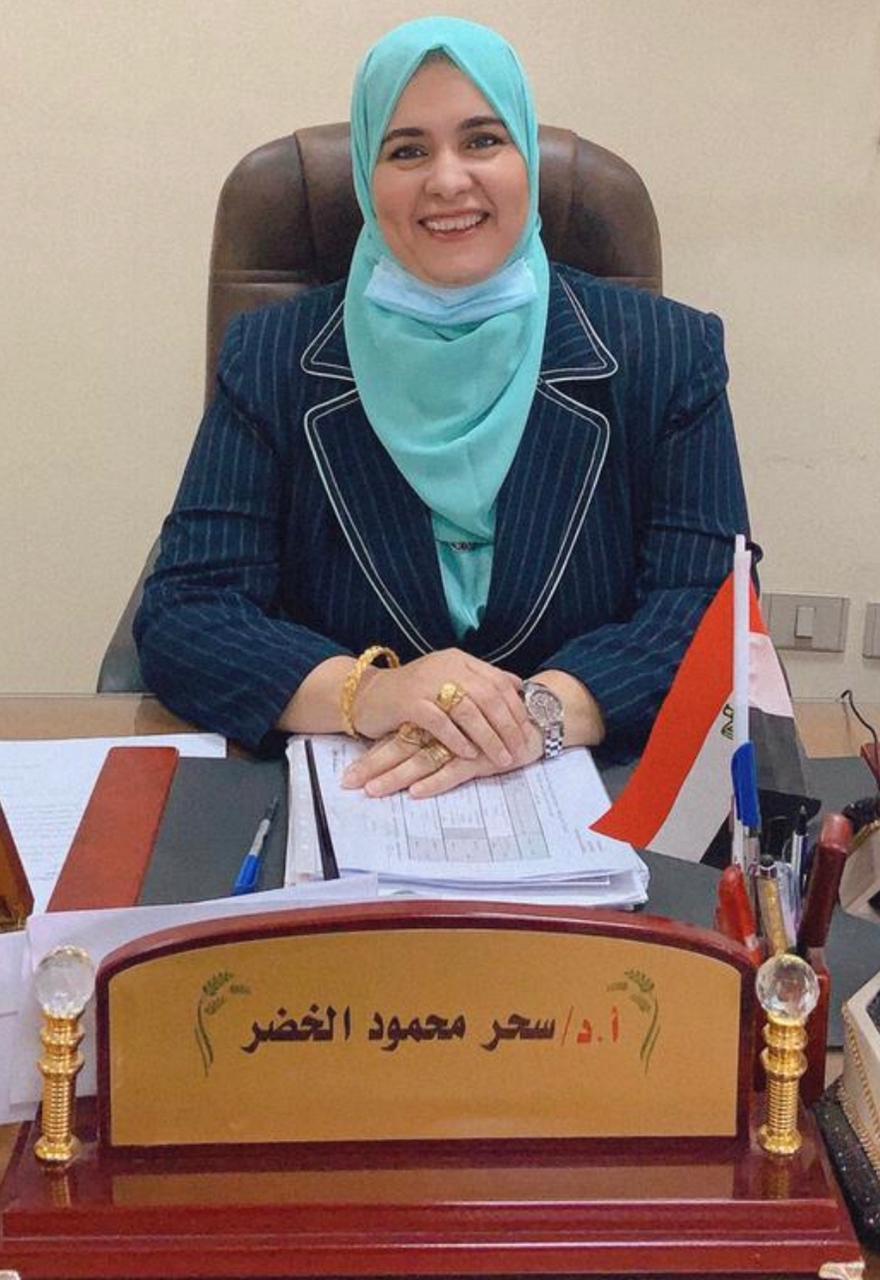
|
Consequences and predictors of climate changes on Children's Health
|
|
|
Sahar Mahmoud Elkhedr Ahmed Abd-Elgawad
|
|
|
Faculty of Nursing, Tanta University
|
|
|
sahar.abdelgawad@nursing.tanta.edu.eg
|
|
|
1684
|
|
|
Climate change is a reality. The records of the past decades prove that the earth is warmer and weather patterns are more extreme and less predictable now than in pre-industrial times. Child’s health care professionals may think of climate change as a global problem outside of their control. A warmer, less stable climate is changing patterns and severity of existing conditions and diseases. Children are among the most vulnerable populations. An analysis of the impact of climate change revealed that, 88% of the burden of disease occurs in children under five years of age, 5% falls on children between five and 14 years of age. While only 6 % occur in people above the age of 15 years. Children fall into all the higher risk categories. In general, children are the most vulnerable to harms results from environmental exposures. Aim: to highlight the consequences and predictors of climate changes on Children's Health. Recommendations: Nurses have a great role in children mitigation and adaptation to climate changes. Nurses must educate colleagues, staff, parents and patients about climate change and effective mitigation strategies. Inform decision makers on the potential health threats to children from climate change and the importance of proactive, preventive measures. Anticipatory guidance to develop educational materials on climate adaptation strategies.
Key words: Consequences , climate changes , Children's Health & predictors
|
|

|
Effect of Upgrading Mothers' Awareness Regarding Cardiovascular Diseases on their self- efficacy to promote their children life style
|
|
|
Dr/ Basma Mahmoud Abd Elhamid
|
|
|
Faculty of Nursing, Tanta University
|
|
|
basma_dawood@nursing.tanta.edu.eg
|
|
|
1706
|
|
|
Background: The progressive atherosclerotic process begins in childhood and develops gradually under the influence of conventional risk factors such as obesity and low levels of physical activity so continuous educational program for their caregivers is important. Aim: to evaluate the effect of upgrading mothers' awareness regarding cardiovascular diseases on their self- efficacy to promote their children life style. Setting: The study was conducted at the pediatric medical department and pediatric outpatient clinic affiliated to Tanta University Hospital, Tanta city, Egypt. Sample: a convenient sample of 60 mothers of school age children who attended the previously mentioned settings. Tools: two tools for data collection Were u sed: Tool I Structured interview questionnaire, it consisted of three parts. Sociodemographic data of the studied mothers, past and present family history for cardiovascular, diseases. The third part is mothers' knowledge about cardiovascular diseases. Tool II: Mothers' self-efficacy questionnaire. Results: the present study found that 91.67% of mothers had unsatisfactory practices level regarding their children life style before the educational intervention while 80% had satisfactory practices immediately after the educational intervention. Conclusion: there was a significant improvement in mothers' practices regarding their school age children life style Recommendations: educational programs for care giver should be conducted periodically and regularly regarding cardiovascular diseases risk factors among children.
|
|

|
Effect of Virtual Reality compared to Guided Visualization on Arteriovenous Fistula Cannulation pain and pain anxiety among hemodialysis children
|
|
|
Dr/ Eslam Mohammed Gado
|
|
|
Faculty of Nursing, Tanta University
|
|
|
eslam_gado@nursing.tanta.edu.eg
|
|
|
1707
|
|
|
Background: Children undergoing treatment with hemodialysis are exposed frequently to pain and anxiety which are caused by the insertion of large-gauge needles into an arteriovenous fistula. Non pharmacological pain management methods such as virtual reality and guided visualization are used to manage pain and pain related anxiety. Aim: to evaluate the effect of virtual reality compared to guided visualization on arteriovenous fistula cannulation pain and pain anxiety among hemodialysis children. Setting: the study was carried out at the Tanta Main University Hospital, Pediatric Medical Department, Dialysis Unit, Tanta City, Egypt. Sample: a convenience sampling of thirty children undergoing hemodialysis with arteriovenous fistula were included from the previously mentioned setting. Tools: there were three tools used: Tool I: Structured interview schedule, consisting of three components: sociodemographic characteristics of the children, data about the caregiver of the child and data related to the disease and fistula. Tool II: Wong–Baker faces pain rating scale for children. Tool III: Pain Anxiety Symptom Scale Short Form which was developed by McCracken (2002). Results: 53.33% and 33.33% of the studied children had moderate and severe pain anxiety symptoms pre-intervention respectively while 73.33%and 46.67%of them had mild pain anxiety symptoms during application of virtual reality and guided visualization respectively. Conclusion: visual reality was the preferred method which given the greater relief of pain and pain anxiety than guided visualization. Recommendations: visual reality should be used and disseminated to other hemodialysis centers as a strategy to reduce pain and pain anxiety among those children undergoing hemodialysis.
|
|

|
Effect of Psycho- Educational Program about Violence on Nurses' Knowledge and Practice
|
|
|
Dr. Zebeda Abd-Elgwad Elsherif
|
|
|
Faculty of Nursing, Tanta University
|
|
|
zebeda.elsherief@nursing.tanta.edu.eg
|
|
|
1708
|
|
|
Background: Violent behavior of psychiatric patients is a public health problem. It presents obvious risks of injuries or death of assailants and their victims. Aim: this study aimed to evaluate the effect of the psycho-educational program about violence on nurses' knowledge and practice. Design: A quasi- experimental research design was utilized in this study. Setting: The study was conducted at Tanta Psychiatric and Mental Health Hospital affiliated to ministry of health and population. Tanta city, Algharbya Governorate, Egypt. Subject: A sample of 50 randomly selected psychiatric nurses were recruited for this study. Tools: Two tools were used to collect data; tool I part1: socio-demographic characteristics for nurses, part2: Structured Nurse's Knowledge Questionnaire. Tool II: Observational Checklist for Nurses' Practice Related to Patient Violence. Results: The main result of this study revealed, highly significant improvement in nurses' level of knowledge and practices toward violent patient after implementation of psycho-educational program. Also, there were statistically significant positive correlation between nurses' level of knowledge and level of practice related to psychiatric patients' violence immediately after and 3 months after implementation of the educational program where (r =0.861, P=0.019) (r =0.418, P= 0.003) respectively. But, there were no statistically correlation between nurses' level of knowledge and practice related to violence before implementing the program as r = 0.180, P= 0.211. Conclusion: The present study concluded that, the educational program sessions played an important role in improvements of nurses' level of knowledge and practices toward violent patient. Recommendations: This study recommended implementing further educational program for nurses concerning the pattern of communication and behavioral management for violent patients is very important.
|
|
|